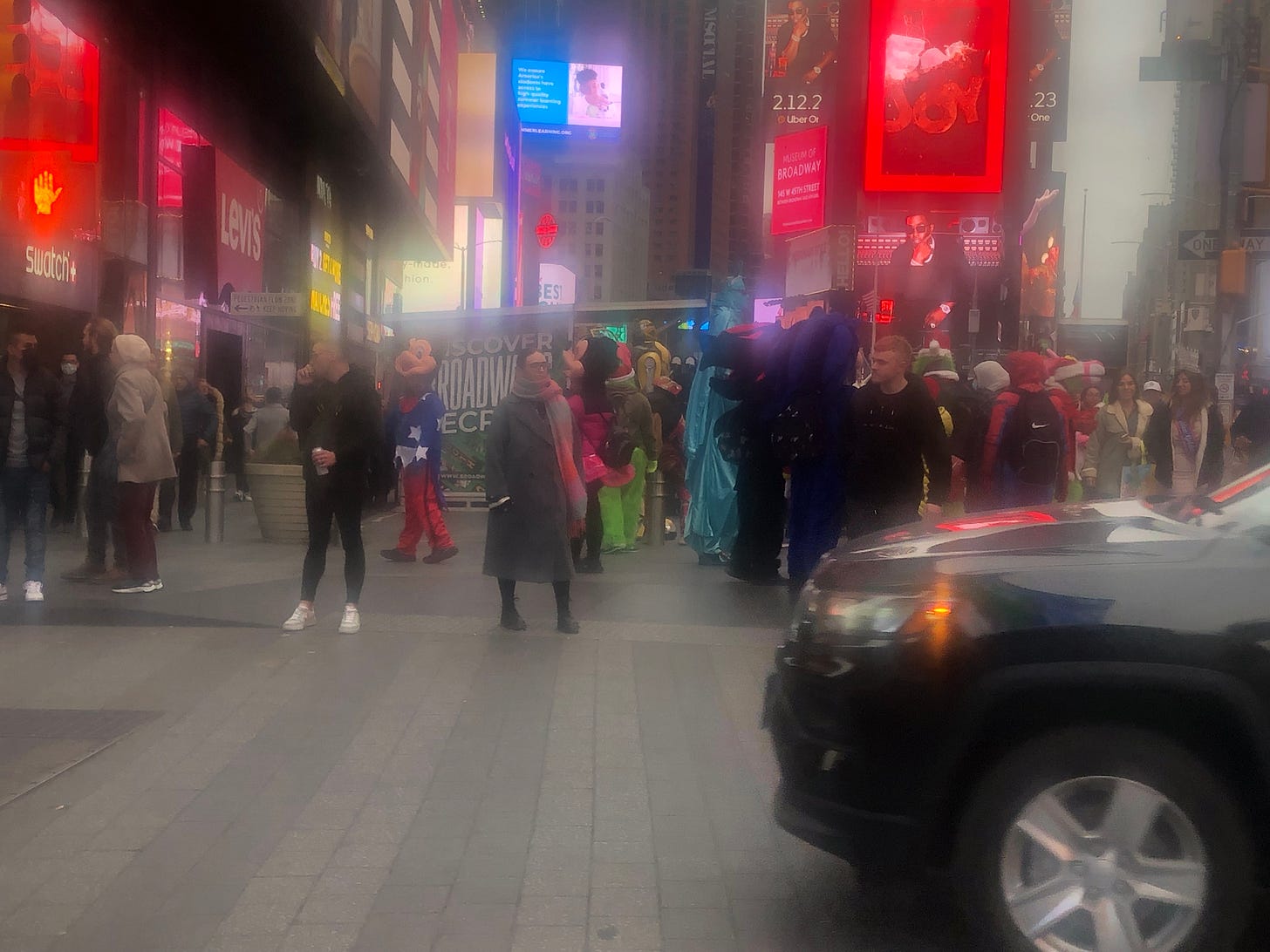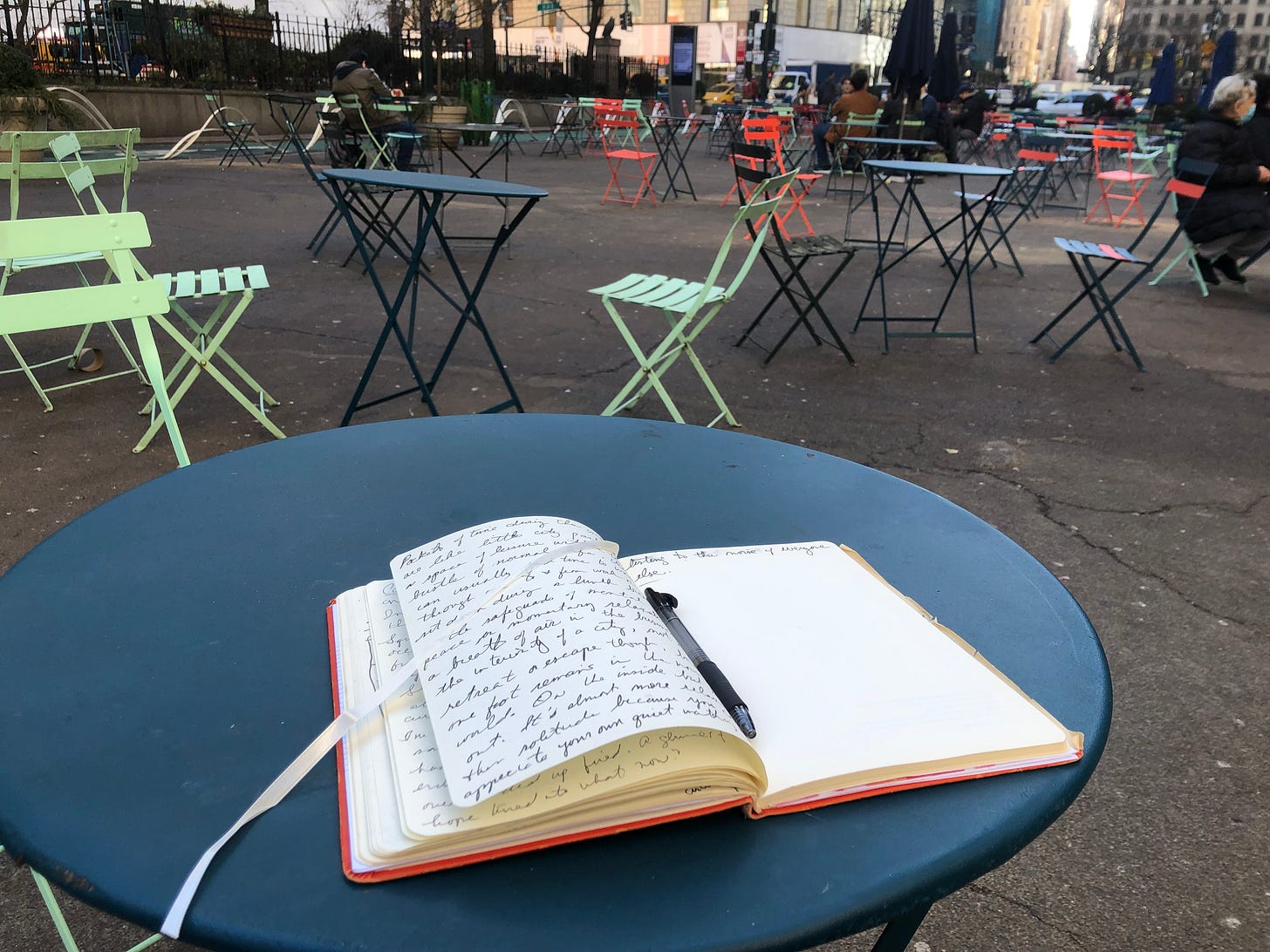I recently went to New York for a business trip. It was a short visit but it was the first time I’ve been back in the big apple since the pandemic. Like many, New York holds a special place for me. I lived there in my early thirties, a period that saw me get married, the birth of two children and completion of my first book.
One of the feelings I liked about living in New York was living in an apartment that was aged and lived in. Just turning on the metal faucet knob in the bathroom and sitting next to the iron radiator under the window made the past feel alive, like a shadow reliving the prewar era. There was a comforting feeling knowing that dozens of other people had probably from various generations lived in this same apartment, struggling as well just to make ends meet.
***
My day started early and I took the Amtrak train from DC up to Penn station which, to my surprise, is now called Moynihan Train Hall. And what a change that has brought. Penn station is now a modern version of the Paris arcades with high ceilings of glass that enclosed a once outer space creating a vast interior populated with luxury stores, bookshops and a food court with bar and restaurants.
Walter Benjamin saw in these Parisian arcades the birth of modernism. His grandest work, The Arcades Project, which was never published during his life, a life cut short on the Spanish border in 1940 trying to escape Nazi occupied France, was a study, or better yet a written catalog, of 19th century Paris, specifically the structures known as arcades. These werenew public spaces enclosed by glass ceilings that were made possible by the development of iron and glass as building materials.
This structure, a large greenhouse spreading for a city block, became one of the main features in during 19th century world fairs because it would enclose the fair with its various shops, entertainments, and exhibits.
Paris was the center of culture and scientific progress at the time and these arcades were used to house the city streets by creating a glass canopy over the many shops so people could walk through the streets and be protected from the elements outside. The glass roofs were first used for covered markets, exhibition halls and railroad stations, all places that were transitory and functional for the economy. It was under the glass roof of these arcades that Benjamin saw the birth of modern consumerism and capitalism.
“An arcade is a city, a world in miniature.”
For Benjamin, these arcades were trying to preserve the shops and cobble streets of old Europe through the invention of ephemeral structures, made possible by iron and glass, which could easily be set up and removed at will. He would see this ephemerality as a characteristic of modernism, an idea he got from the poet Charles Baudelaire, where goods become commodities for consumers to browse and purchase within the glass arcades. Random things are put next to each other for sale with no relation to each other or the place it is being sold, things sold on a whim with no connection to place or history.
***
My first meeting that day was in New Rochelle, about an hour north of the city, so after arriving at Penn - Moynihan Train station I walked to Grand Central to catch the Metro-North train.
Grand Central was built at the start of the twentieth century and is one of the monuments to America’s Gilded Age, an economic boom that was largely fueled by the railroad industry, a new technology also spawned by the discovery of iron. Unlike the Parisian arcades at the time, Grand Central was built in the conservative Neo-classical style, also influenced by the French, but harkening back to an earlier time of the classical world of Greece and Rome. Cresting the top of Grand Central is a statue of Hermes standing on top of a clock that is known as the Glory of Commerce.
I’ve always loved the ceiling of Grand Central. Instead of a glass window it shows the line of the zodiacal precession with a few constellations navigating the night sky, capturing in stone the masonic beliefs of the founding fathers and later presidents, justices and lawmakers.
Grand Central was made of stone in the traditional form of architecture and thus resisted the growing modernism at the time that was already present in Paris when it was built. When iron and glass were first introduced as building materials, many critics complained that it created an unnatural illusion because it did not appear that thin iron beams could support the massive roof that rested on its shoulders. These arcades lacked the weight and visual stability of stone which was a natural product whose blocks were the materials that constructed temples to the gods for millennia.
***
In New Rochelle, we went out to eat in an old style Italian restaurant, the kind where the restaurant is run by a married couple who double as chef and waitress. There’s no menu, and ordering is more of a conversation about what you’re in the mood for and what’s in season.
After the meeting I got back on the train to head back to the city. At one of the station stops at Fordham a group of young prep school kids got on the train. They were wearing hoodies that covered their untucked oxfords and loosened ties, bright white sneakers under tired slacks and sporting shaggy hair that partially covered their ears and foreheads. These young men, likely the next business leaders, firm partners and investment managers, were full of a casual energy and irony, grouped in packs, and wearing a code that balanced the irritation of having to wear a uniform, an old stamp of wealth and privilege, with urban accessories.
Back in the city, I cleaned up at my hotel and got ready for a fundraiser that evening at a building in Times Square. It’s always an experience going through Times Square, like walking through the dream of capitalism with all the people and massive screens projecting images of the latest fashion, entertainment and technology.
Instead of a glass roof, it is a sea of ads and weightless images projected in the sky. As I walked through that evening I thought how much it was similar to scrolling through Instagram these days, a series of endless images and short videos, each a little puzzle to try and win your attention for a few seconds. They usually sell something, sometimes a product but also a service, a piece of advice. Unlike the commodities Benjamin talked about, they seem to be selling you a way of becoming something else, products as a ticket to celebrity or happiness.
One of the central ideas in The Arcades Project is the “flâneur”, a term Benjamin borrows from Baudelaire to discuss the Parisian who slowly walks through the arcades, resisting the hurry and purpose of the modern businessman, to look at the goods yet nostalgic for the past. A recent article compared the Parisian flâneur with the online influencer of social media today. It states, “In the glass interiors of the arcades, objects were transformed into commodities, and so the flâneur was transformed into a consumer, and simultaneously a product for consumers.” The person who absorbs the arcade is not just the consumer, they end up becoming a product for others in the space, much like an influencer.
One ad that caught my mind while walking through Times Square was an ad for the meditation app Calm. I’ve been following Calm on Instagram as an inspiration for my own project, Innerstice [Warning: brief plug]. The Calm ad used an animated video of the beach which happens to be the same stock photo I used on my LinkedIn banner for Innerstice courtesy of the graphic design platform, Canva. Uncanny…
But then I thought about how targeted ads were on social media, one online purchase on your phone and you will get ads for similar products on another app. So perhaps there is a way, using some form of geo-location, that social media apps will be able to send ads that target you not only the screen of your personal device but also larger screens in public spaces if you are walking through that space with your device.
Im sure that’s possible already but it would be hard to manage the various ads and the timing with so many people walking through a public space like Times Square. Instead, this is likely what the metaverse will look like, a giant series of ads in virtual space connected to your own searches, clicks, views. Instead of a glass public ceiling, it will be a projection of images connected to your personal tastes in your own private little bubble. A virtual amazon.
***
After the event, I went to the hotel restaurant for a late dinner. The restaurant looked French and had dark wall paper with dim lights and vintage looking pictures hanging on the wall, pictures that were black and white but whose paper had the yellow tinge you see in antique stores. The pictures were mainly of families including one that looked like a patriarch in full 19th century military gear.
It made me think of an article I read about modernism’s dissolution of the nuclear family and how that can be seen, whether explicitly or implicitly, in the aesthetics of modern architecture and design with movements such as minimalism with it’s sleek lines, large windows, and abstract paintings that replace family pictures.
Family pictures hanging on walls, like at this restaurant, seems antiquated in one’s house but cozy when sitting in room like this with little “nooks and crannies”. I confess, I like large windows and have no family pictures hanging on the walls, only a few paintings. I do, however, have a black and white photo of my dad framed on a bookcase. I got it from my mom and framed it after he passed away, a way of remembering him.
Having pictures of grandparents, aunts and uncles, great grandparents establishes a connection with one’s ancestors. These physical photos have a way of preserving something that is no longer there. Removing the past seems like one of the drivers of modernism.
***
This was a quick trip and I was scheduled to leave the next day. In the morning I had some time before my train was going to depart so I ended up walking from the hotel towards the train station early and sat in a park for a few minutes since it was a warm February morning.
Urban parks can be a breath of fresh air in the interiority of a city, a space of leisure within the bustle of normal life. Sitting in the park, looking out at people on their way, allowed me some time to watch the rhythm of the city for a while. Instead of the immersive experience of the arcade, or Times Square, or even Instagram, the city park creates a little escape while remaining within the confines of the machine. These parks, largely an invention of modernism with the rise of the city, reflect a need for modernism to take a break from itself.
Sitting here allowed me a few minutes to take in the city and the previous day before getting back in line to board the train.










Thanks for sharing this fascinating account, Larry -- once I started reading it I couldn't stop until I reached the end. Masterfully told!